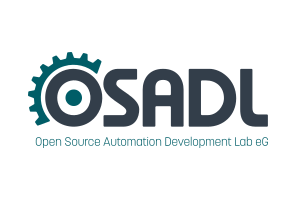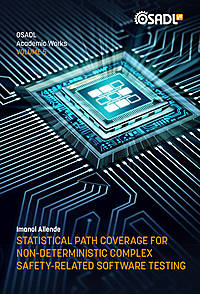Dates and Events:
|
OSADL Articles:
2023-11-12 12:00
Open Source License Obligations Checklists even better nowImport the checklists to other tools, create context diffs and merged lists
2022-07-11 12:00
Call for participation in phase #4 of Open Source OPC UA open62541 support projectLetter of Intent fulfills wish list from recent survey
2022-01-13 12:00
Phase #3 of OSADL project on OPC UA PubSub over TSN successfully completedAnother important milestone on the way to interoperable Open Source real-time Ethernet has been reached
2021-02-09 12:00
Open Source OPC UA PubSub over TSN project phase #3 launchedLetter of Intent with call for participation is now available |
OSADL Academic Works
Vol. 1: Linux in Safety-Critical Applications - Vol. 2: The SCART Hardware-Software Interface - Vol. 3: Hypervisor-Based Composable Systems for the Automotive Industry - Vol. 4: Concept of a Centralized User Configuration (CUC) in Time-Sensitive Networking (TSN) for Industrial Use Cases - Vol. 5: Statistical Path Coverage for Non-Deterministic Complex Safety-Related Software Testing
Vol. 5: Statistical Path Coverage for Non-Deterministic Complex Safety-Related Software Testing
by Imanol Allende
This volume of the OSADL Academic Works series presents a thesis that examines the viability of statistical methods to cope with the safety requirements of next-generation complex autonomous systems.
To meet the requirements of complex autonomous systems it may be advantageous to deploy a fully grown operating system such as Linux that can provide reliability, performance, security and updates. However, due to its resource-sharing architecture, traditional safety-related verification processes may no longer be feasible or, if so, not solely sufficient. The work presented herein proposes to complement the traditional approach with statistical analysis to pave the way towards the certification of safety-related complex applications. Specifically, it contributes a novel statistical analysis technique to quantify the execution path coverage of the Linux kernel and to estimate the residual risk resulting from untested execution paths.
Starting by examining the main gaps in the field of test coverage with respect to the Linux kernel, the work goes on to statistically estimate the current test coverage by analyzing the execution paths traversed during a testing campaign. The proposed methods are demonstrated on the example of an autonomous emergency braking system that is based on a Linux kernel in combination with machine learning and is, as such, representative of next-generation safety-related systems. On the basis of this case study the inherent non-determinism of the Linux kernel is revealed, and it is shown that estimating test coverage with the proposed statistical methods is viable. Finally, a technique to quantify the testing process and the risk associated with uncovered paths is presented.
About the author
Imanol Allende received his Ph.D. in computer science from the University of Siegen in 2022. Since 2014, he has been involved in various research projects involving safety-related systems based on Open Source software. He collaborated on the SIL2LinuxMP project, and is currently continuing research derived from his Ph.D. thesis on the analysis and testing process of GNU/Linux for next-generation safety-related systems. His research interests combine functional safety, statistics, machine learning and autonomous systems. His current research work also focusses on quantifying the uncertainty of machine learning algorithms in order to pave the way towards the assurance of safety-related autonomous systems.





